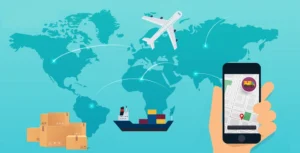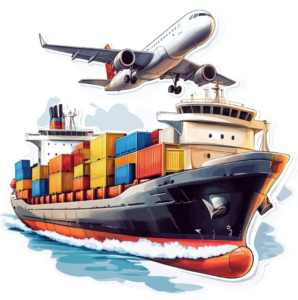In the fast-paced world of international trade, small business owners often find themselves navigating complex customs regulations to import goods successfully. Whether you’re importing electronics, textiles, or raw materials, one thing remains constant: customs clearance requires a meticulous approach. For business owners, understanding the cost of customs brokerage services is essential for smoother operations and strategic budgeting.
In this comprehensive guide, we’ll explore the primary factors affecting customs brokerage costs, offer actionable budgeting tips, examine real-world examples, and provide insights into making more informed decisions for your business.
What Are Customs Brokerage Services?
Before diving into the cost, it’s crucial to understand the role of customs brokerage services. A customs broker serves as a bridge between your business and customs authorities, ensuring that your shipments comply with legal requirements in your importing/exporting country. They handle essential tasks such as documentation, import duty calculations, and liaising with government agencies on your behalf.
For small businesses, hiring a competent customs broker ensures not only faster clearance of goods but also mitigates risks of costly errors or penalties. However, these benefits come at a price. To better understand the pricing structure and avoid unnecessary spending, let’s analyze the factors that influence the cost of customs brokerage services.
Breaking Down the Costs of Customs Brokerage Services
1. Customs Broker Cost Breakdown
The cost of customs brokerage services isn’t one-size-fits-all—it depends on various elements such as shipment complexity or the volume of goods. Here’s a detailed breakdown of common charges:
- Entry Preparation Fees: These fees cover filing customs documentation and preparing your shipment for review. Depending on the complexity of your shipment, this cost ranges from $100 to $500 per entry.
- Classification Fees: Your goods must be classified under the Harmonized System (HS code) so the correct duties and taxes are applied. Accurate classification is critical, as misclassification can result in fines. Some brokers may charge $25 to $100 per HS code for this step.
- Customs Compliance Checks: A thorough compliance analysis ensures all shipments meet regulatory standards. Costs range from $50 to $200 depending on documentation and cargo type.
- Post-Clearance Fees: Some brokers charge additional fees for handling appeals or revisions if errors arise after goods enter the country. This could cost up to 10%–15% of the initial fee.
If you opt for additional services like expedited shipping or insurance handling, fees may further increase.
Example: A small business owner importing leather goods from Italy might need a customs broker to manage entry preparation and compliance for their shipment. If their shipment involves three HS codes, the total cost could be $400–$600.
2. Import Duty Charges
Duties and taxes are separate from customs brokerage fees but form a significant component of the overall import cost. Import duty rates vary based on the following factors:
- Product Type: Some goods (e.g., food, alcohol, textiles) have higher duties due to regulatory scrutiny.
- Country of Origin: Trade agreements impact duty rates. For instance, the United States-Mexico-Canada Agreement (USMCA) offers preferential duty rates for eligible imports among the three countries.
- Declared Value: The higher the commercial value of goods, the higher the duties imposed.
Example: A small business owner importing $10,000 worth of electronics from China might face a 10% duty rate, amounting to $1,000 in import costs. Add customs clearance fees, and the total import costs could increase to $1,500–$2,000 per shipment.
Pro Tip: Use an online import duty calculator or consult with your broker to estimate your landed costs before importing goods.
Navigating International Shipping Paperwork
1. The Importance of Accurate Paperwork
One of the main responsibilities of customs brokers is ensuring your shipping paperwork is complete and accurate. Missing or incorrect documentation is one of the top reasons shipments get delayed or stuck in customs, leading to higher storage fees or demurrage charges.
Key documents include:
- Commercial Invoice: Lists the value, quantity, and description of goods.
- Packing List: Details how goods are packaged and their weight/dimensions.
- Bill of Lading (BOL): Declares ownership of goods and serves as proof of shipment.
Small business owners can streamline this process by maintaining templates for frequent shipments and double-checking paperwork with their broker before submitting.
Case Study: Jeff, a small business owner importing artisanal coffee from Colombia, faced delays when he omitted the Harmonized System (HS) code on his commercial invoice. Coordinating with the broker post-facto to resolve this issue resulted in an additional $150 compliance fee and a delayed shipment by two days.
2. Freight Forwarding Documentation
Freight forwarders manage the physical transportation of your goods. Their responsibilities overlap with customs brokers in one key area—documentation.
Here’s what freight forwarders typically handle:
- Export Declarations: Required when shipping goods out of the country.
- Transportation Contracts: Agreements specifying the terms of moving goods from warehouse to destination.
- Insurance Certificates: Provide assurance that your shipment is protected during transit.
If you’re using both a freight forwarder and a customs broker, clarify their respective roles upfront to avoid duplication or gaps in service. This helps optimize costs and eliminates the risk of miscommunication.
Budgeting Tips for Small Business Owners
1. Plan Ahead and Anticipate Costs
Proper planning is key to budgeting for the cost of customs brokerage services. Anticipate upcoming shipments, assess their complexity, and allocate resources accordingly.
Steps to plan ahead include:
- Researching tariffs, import duties, and trade agreements relevant to your industry.
- Seeking guidance from customs brokers early in the process to avoid unexpected fees.
- Pre-checking documentation to prevent customs holds.
Example: A clothing retailer importing spring collections in bulk can collaborate with their broker months in advance to estimate costs, assign HS codes, and ensure goods arrive before peak shipping season when logistics services are oversubscribed.
2. Compare Multiple Quotes
Not all customs brokers offer identical pricing structures. Obtaining quotes from at least three brokers or freight forwarders allows you to compare the value of their services against their cost.
When comparing quotes, evaluate these factors:
- Is the pricing transparent, or does it include hidden fees?
- Does the broker specialize in imports for your industry?
- How responsive and reliable is the broker, based on reviews or client testimonials?
Pro Tip: Don’t solely focus on the lowest price. A slightly higher cost is often worth it for a more knowledgeable and efficient broker.
3. Leverage Technology to Save Costs
Automated tools like customs software or online dashboards can reduce manual work and streamline your interactions with brokers. These platforms often provide real-time simulation of duties, automated HS code classification, and compliance alerts.
Using such tools can significantly reduce errors, which are a common source of unexpected costs.
Case Studies: Real-World Anecdotes
Case Study 1: John’s Success Story
John owns a small electronics business and imports components from Taiwan regularly. Initially hesitant about hiring a customs broker due to the costs involved, he discovered the challenges of handling paperwork himself. Misclassified imports led to penalties. After partnering with a reputable broker, John not only corrected prior errors but also avoided unnecessary duty charges. This collaboration saved his business 20% on annual import costs.
Case Study 2: Proactive Communication Saves Jane Money
Jane, a small-scale clothing retailer, frequently imports garments from Vietnam. By proactively communicating with her customs broker, she was able to clarify invoices before finalization, ensuring duty calculations were accurate. This close partnership helped Jane avoid customs re-audits, saving her time and eliminating risks of penalties.
Actionable Tips for Optimized Customs Clearance
To ensure seamless customs broker interactions, small business owners can implement these practical steps:
- Develop a customs compliance checklist tailored to your industry.
- Stay educated on changes in trade regulations, duty rates, or preferential trade agreements.
- Build long-term relationships with brokers and freight forwarders for enhanced prioritization.
- Keep records of past shipments to compare duty rates and broker accuracy over time.
Conclusion
For small business owners engaged in global trade, the cost of customs brokerage services is an essential consideration that directly impacts profitability. By understanding the cost breakdown, leveraging proactive communication, and adopting actionable budgeting strategies, businesses can streamline their import operations and avoid unnecessary disruptions.
Partnering with knowledgeable customs brokers, planning ahead, and embracing technology can further optimize your costs while ensuring compliance with international trade regulations. As a small business, every dollar saved in customs clearance can be reinvested in growth opportunities, helping you scale operations sustainably in the global market.




